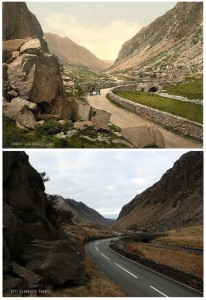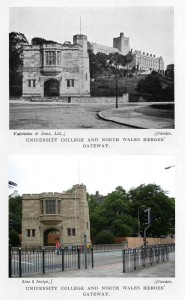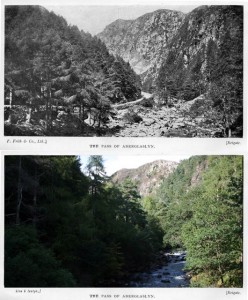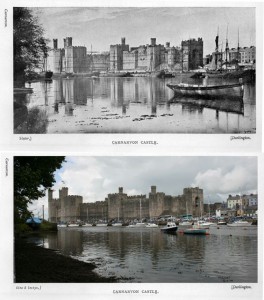From the ‘resting place’ we begin the descent of the -Llanberis Pass, the finest motor mountain-road in Wales. The precipitous and craggy sides of the noble mountains press closely on each other and shut in the narrow pass. Shattered masses of every form, which have fallen from the heights, lie in strange confusion, and amid them the  Seiont, rushing and roaring, hastens its descent to the head of Llyn Peris.
Some two miles farther we reach the picturesque village of Nant Peris, formerly knows as Old Llanberis, and soon afterwards are running by the side of Llyn Peris, on the opposite shore of which are the Dinorwic slate quarries. Then we get abreast of the remains of Dolbadarn Castle. The consist only of a round tower, which probably does not date back many centuries, but the site is said to have been held by the Prince of North Wales in the sixth cantury. Beyond the ruin we arrive at the Royal Victoria Hotel, in modern Llanberis. At the foot of the hotel grounds is the lower terminus of the Mountain Railway.
Skirting Llyn Padarn, en route for Caernarvon from Llanberis, the remarkable manner in which the slate quarrymen have terraced the mountain slopes opposite is well seen. Then on the left the Cefndu wireless station comes in view and shortly after Carnarvon is reached.”
I’d sure have to agree that this road is the finest ‘motor mountain-road in Wales’. It sure is awesome. It’s my second favourite mountain route in the UK, second only to the epic A82 running through Glen Coe in the Scottish Highlands.
The Pass itself hasn’t changed much since the good old days, only a few big rocks been moved, but apart from that, it’s in top shape!




